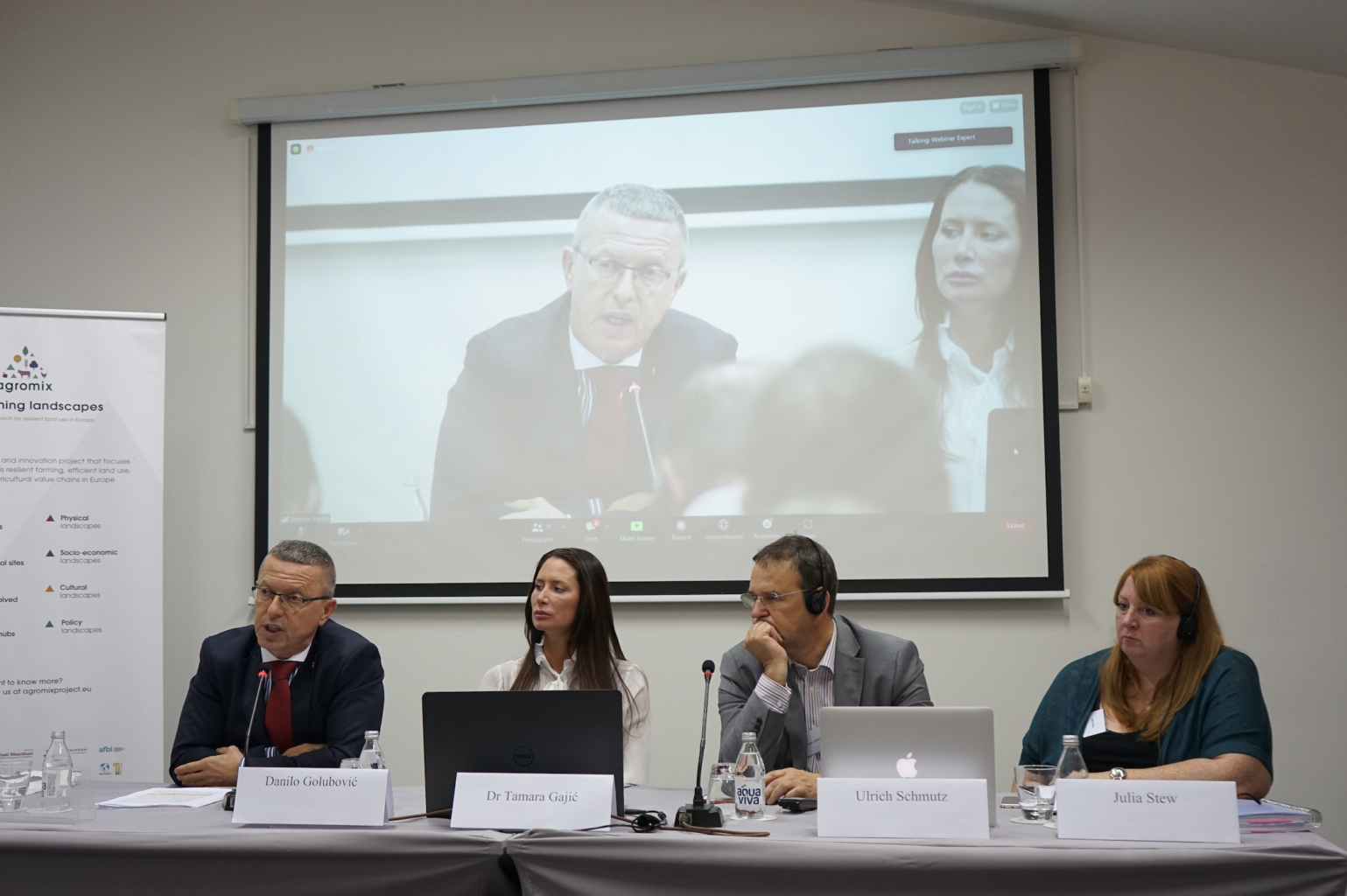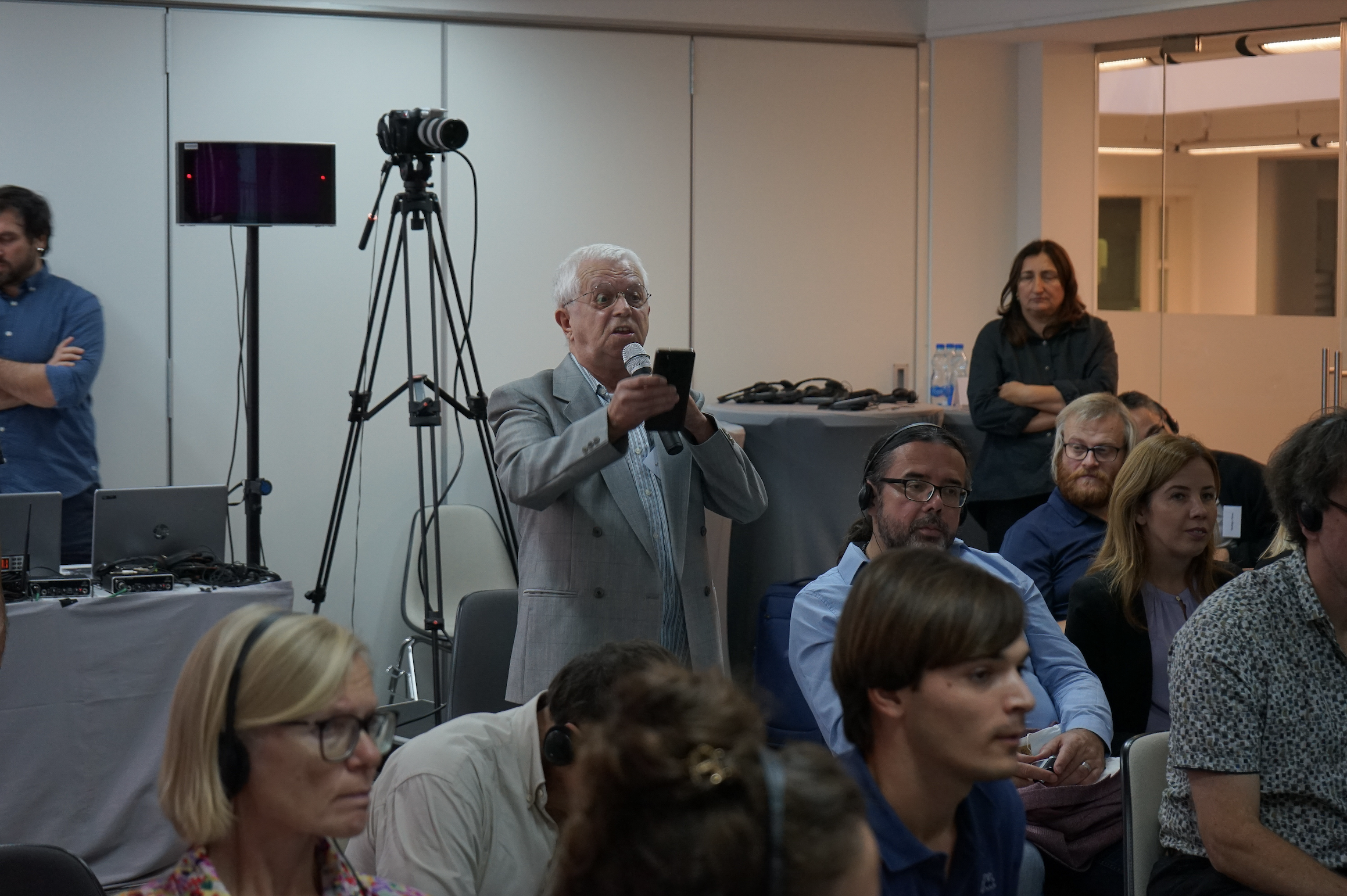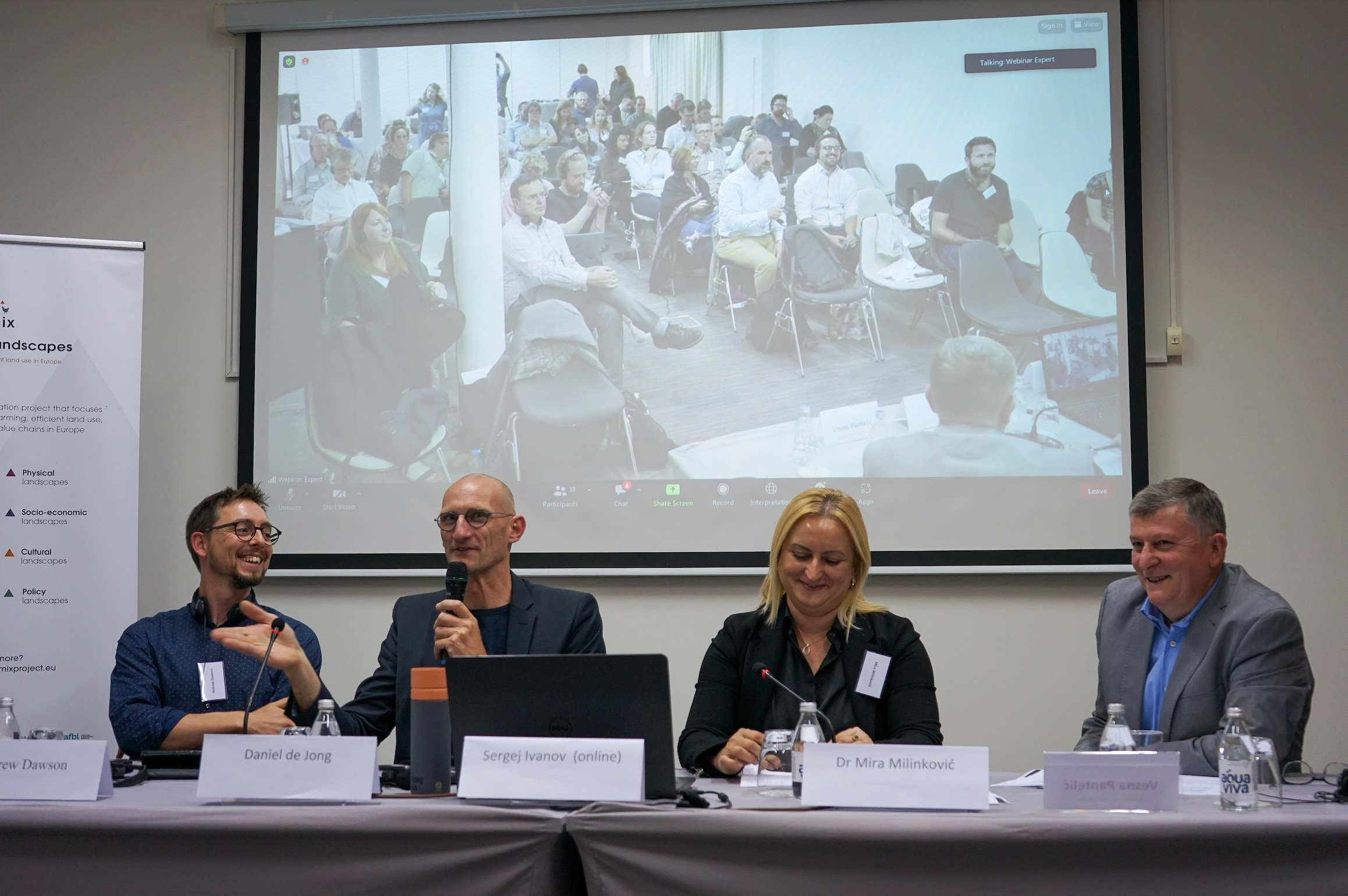Agroforestry and mixed farming practices are backed by researchers and scientists as models that can help European agriculture become more sustainable and more resilient to a changing climate. Falling within the philosophy of agroecology, which advocates for more environmentally- and nature-friendly farming systems, agroforestry is, in fact, nothing new but rather something of an agricultural foundation from which we have departed, guided by agricultural policy and incentives that encouraged intensive systems with high levels of output and profitability.
With the changing climate firmly on the agenda of the European Union, focus has once again shifted to our food chains — something we all rely on. This is reflected in the Horizon Europe programme’s 9-billion-euro budget for food, bioeconomy, natural resources, agriculture and the environment, said Susana Gaona Sáez, research policy officer at the European Commission’s DG Agriculture and Rural Development, at the AGROMIX public conference held in Belgrade, Serbia, on 3 October 2023.
She added: “I find AGROMIX a project that is at the core of the EU’s policy and research priorities for the agricultural sector (…) and I think in particular the work that you’re doing in terms of analyzing the CAP plans contribution to agroforestry is particularly interesting from the perspective of the agricultural policymakers.”
Goana Sáez highlighted the potential of the Standing Committee on Agricultural Research (SCAR)’s Agroecology partnership, which could begin in early 2024 after positive evaluation from external evaluators and wields a budget of 300 million euros. Serbia also participated in the working group, she added.
A CANDIDATE NATION

From a European Union perspective to a Serbian one.
Danilo Golubović, the Advisor to the Minister for European Integration of the Republic of Serbia, provided the AGROMIX public conference with updates from IPARD III, the latest phase of the EU-Serbia instrument for pre-accession assistance for the rural development programme, which is to run between 2021-27.
The ministerial advisor gave a rundown of the existing agricultural policy and framework in Serbia, the changes being made as part of the programme to bring them into line with the EU and the roadmap of changes still required to meet those targets.
He stated that Serbian agriculture would align with EU regulations, although some elements, such as incentives, would remain different. He added that joining the EU would mean better funds for rural development and agriculture for Serbia, an official candidate culture.
BALANCING DEVELOPMENT WITH TRADITION
Tamara Gajić, senior research associate at the Faculty of Hotel Management and Tourism in Vrnjačka Banja, University of Kragujevac, told the AGROMIX public conference about her work in the development of rural Serbia, and the struggle to balance it with maintaining “authenticity” and village traditions.
“I would like to point out that only by working together, with joint efforts, the association of local communities in the tourism sectors, agriculture, forestry, agriculture, and of course with the help of the state, we can contribute to the creation of a cycle of continuous improvement of agriculture and all these related or close sectors of agriculture.”
This notion of tradition was a recurring feature from the Serbian guest speakers in Belgrade.

SYSTEMIC ISSUES
Alen Kiš, from the Institute for Nature Protection, Autonomous Province of Vojvodina, northern Serbia, told the AGROMIX conference that there was a need for policy changes in Serbia related to land management and agriculture. In his region, natural areas are fragmented across expanses of agricultural land that cover 85% of the flatlands, he said.
He added that local farmers have shown reluctance in adopting agroforestry initiatives.
“Our regional government of Vojvodina Province, last year dedicated about 700,000 euros to the afforestation of agricultural land, and they could spend only 10%.” He added: “There is still a huge amount of arable land in state ownership, these lands are given to local municipalities, and their revenues, because they are giving it on tenure, depend on that. So, if they give the land for afforestation, then the budget of the local municipality will decrease. So, we need to change policy to help the people.”
HANDS-ON EXPERIENCE
Speaking at the ask the expert session, farmer Sergej Ivanov told the AGROMIX public conference about his experience with agroforestry on his farm in southeast Serbia, where he keeps rare, native species in an agroforestry system.
He listed the benefits of his farming system, in which trees provide shade and food for animals which, in turn, fertilise the ground with their droppings. He also mentioned some of his main obstacles, which include challenges in getting lend-lease contracts, the lack of subsidies and support for agroforestry, and a lack of infrastructure in rural areas.

A WAY OF LIFE
Speaking during the expert panel, Mira Milinković, the head of the Institute of Soil Science in Serbia, defined agroforestry as a “way of life,” pointing out, like many of the other Serbian speakers, that the local agricultural systems once more closely resembled. She went on to detail some of the challenges related to restoring the practice, including the struggle to strike a balance with economic demands.
A VIEW FROM THE PROJECT
Joining the expert panel from the AGROMIX project were Ulrich Schmutz, project coordinator and professor at Coventry University; Felix Herzog, research leader at Agroscope, Daniele Vergamini, from the University of Pisa and Andrew Dawson and Daniel de Jong, both from Wageningen University.

Herzog opened the expert session on policy and research by bringing it back to basics with a definition of agroforestry. “Agroforestry is not new, farmers have always used trees on their farms,” he said.
“These wonderful traditional systems provide not only agriculture products, but they are very important for biodiversity, ecosystem services and landscape, but unfortunately, they are not so profitable anymore. This is why farmers have tended to abandon them or replace them with more modern types of farming, and with this project, we try to learn from the traditional systems to propose ways for modern farmers to use trees on their farms in combination with crops or other livestock.”
THE FUTURE OF CAP
Project coordinator Schmutz discussed the EU’s common agricultural policy (CAP), the changes that may occur in the next stage of the policy and how to tailor policy to encourage the uptake of agroforestry despite the large levels of bureaucracy.
“Our analysis has shown that agroforestry is not being fully supported yet, and if it is being supported in the current CAP, the uptake has not been as good as it was,” he said, adding some of the policy measures did not adequately address demand and farmer incentives. “With the new CAP, there is a good opportunity to improve that. One thing that changes with the next round of CAP is that member states will have more possibility to create their own policies, it will be maybe more targeted.”
He said countries like Switzerland, for example, have greater emphasis on agroforestry because they are not in the EU.
AT WHAT LEVEL DOES CHANGE NEED TO OCCUR?
Vergamini elaborated on some of the challenges farmers face when it comes to implementing climate smart farming techniques, including measures such as carbon farming. He highlighted some of the hurdles facing farmers.
“We are requesting farmers, who are private citizens, to do something that concerns public goods. So, we are supporting private to produce public goods. Then there is a problem of price, we have the war (in Ukraine), the current economic crisis means that prices are increasing,” he said. “Why should farmers do carbon farming? (...). Do we need a market for carbon? It’s in the mind of the legislators but it is still not there. Carbon farming is promising, but at the same time we still don’t know why farmers should do it despite it being important for limiting climate change.”
He also detailed some of the issues faced by consumers, including inflation and economic crises, pointing out that some members of the public may not be prepared to pay a higher price for products marketed as more sustainable.
CLOSING THE GAP, AND THE SESSION
Dawson and de Jong, closed out the expert session with some observations on agroforestry and the tools that are available to farmers in the field.

De Jong commented on the social aspects of introducing trees into agriculture, stating that it adds a longer lifespan into the system as well as a generational connection.
Dawson, who is working on the AGROMIX app for farmers looking to implement agroforestry, said the technology was part of a bid to close the gap between research and practice.
“Ultimately, part of the reason that we do the AGROMIX app is because there wasn’t very much information available, and that is still very much the case. In many cases there are local initiatives at the national level, where you can find information (…) But there is still a big, big gap in terms of the tools and availability of information that is useful for farmers. We need to step up and provide more usable information for farmers and also advisors.”
INTERNAL MEETING
The following day, on 4 October 2023, the AGROMIX teams held internal meetings and breakaway sessions to bring each other update on the latest task developments and progress. This was followed by the annual steering committee meeting that brought an official end to the conference.

FIELD VISITS
On 5 October, the AGROMIX team then headed on a double field trip, first to the Zasavica nature reserve, where a restored wetland area meets pasture used for free-roaming donkeys, horses and goats. Then it was on to the Bojčinska šuma reserve, where inside a forest brimming with acorns, birds, frogs and insects you can find pigs rummaging through the undergrowth in an agroforestry system.

About AGROMIX
Coordinated by Coventry University, AGROMIX project aims to drive the transition towards resilient farming, efficient land use management, and more sustainable agricultural value chains in Europe. Funded by the Horizon 2020 European Union’s Research and Innovation Programme, the project brings together 28 partners from 14 countries that will explore multi-actor co-design methods to promote and implement mixed farming and agroforestry practices across Europe.
Learn more about AGROMIX’s pilot farms here.